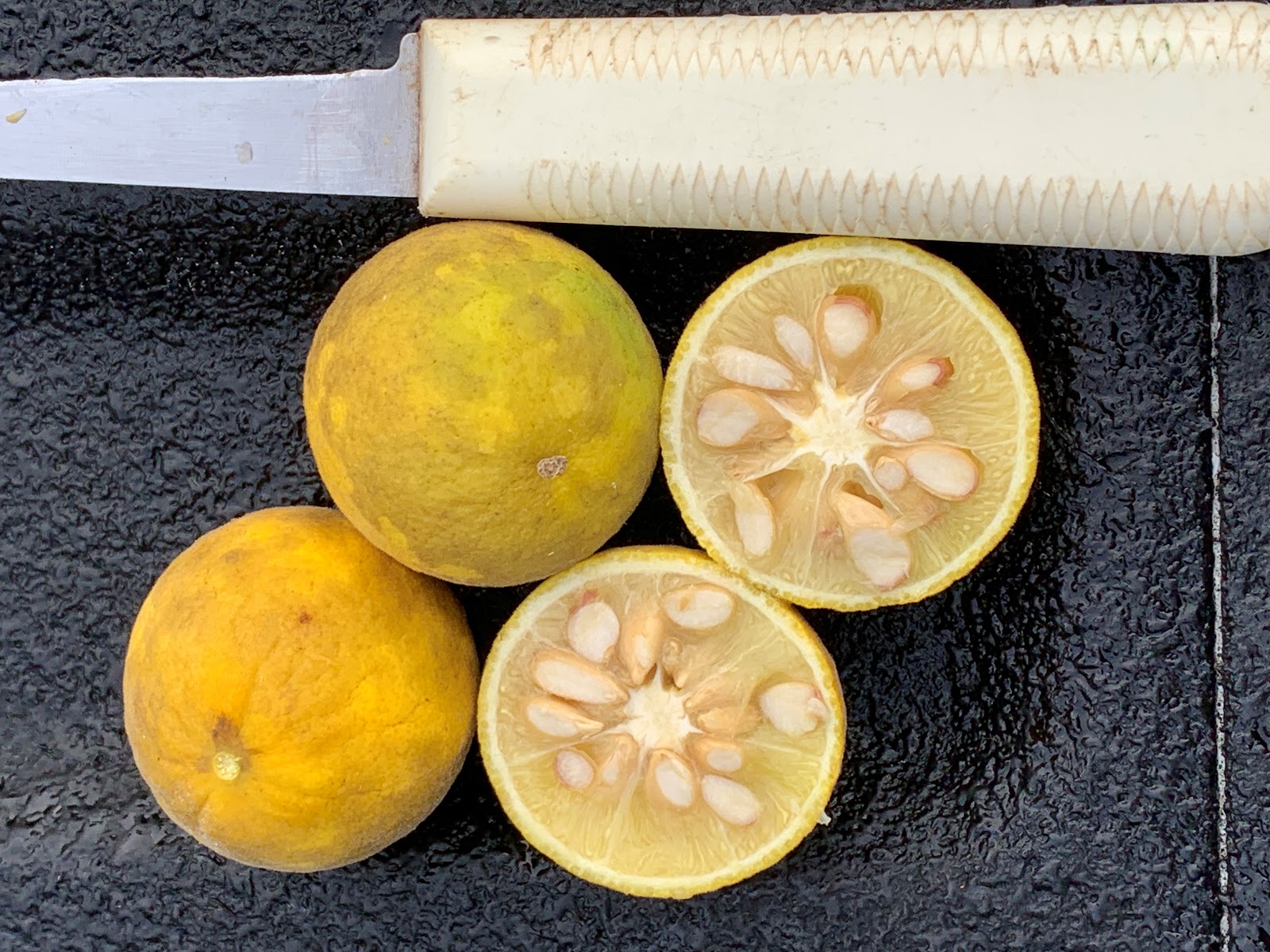Trifoliate Orange: Who's the Hardiest of them All?
The hardiest citrus of all is the Trifoliate orange (Poncirus trifoliata or Citrus trifoliata). It is a deciduous citrus from central China, adapted to cold winters. In the United States, it is hardy to parts of Massachusetts west to about St. Louis, MO. In Georgia, it is hardy throughout the state, of course. It is definitely an heirloom plant and was frequently planted many years ago. The ripe fruit have a distinctive odor (which I find very pleasant) and many years ago, people picked the fruit in the fall and placed it in bowls inside. At that time, many people called the Trifoliate orange a "smell lemon."
Because it was commonly planted and easy to grow in the South, the Trifoliate orange escaped cultivation and naturalized in many areas throughout the state (particularly the Lower Piedmont).
Trifoliate orange is strongly adapted to floodplains, particularly those with sandy soil. In the Piedmont, it is extremely common along streams and rivers. It can form impenetrable thickets.
Trees are typically fairly small, with most averaging 10-15 feet in overall height. Some large, old trees can be nearly twice that size. Because there aren't many animals brave enough to eat the fruits, seeds tend to germinate wherever the fruit fall, and it's not uncommon to find 20 or more pencil-sized seedlings in a single spot.
This citrus has large, hard spines at all ages and stages. The spines can be as long as three inches and cover the plant, making it probably one of the thorniest plants that grow here. In middle Georgia it is common not only along stream banks but also in old fields. It's not uncommon to see a plant or two, and occasionally Trifoliate orange will dominate an area. Because the thorns are tough enough to puncture a tractor tire, farmers tend to loathe this plant. On the other hand, if properly pruned, Trifoliate orange will make a living fence that no one will dare attempt to walk through.
The fruit of Trifoliate orange are small (1''-3" in diameter). Inside, the pulp and juice are exceedingly sour and bitter, with sticky gum cells. Each fruit is filled with seeds.
Unlike most other citrus, Trifoliate orange goes truly dormant in the winter. It is deciduous, and when dormant the plant is hardy to temperatures well below 0F. Like other temperate plants, it responds to day length, and will bloom here around the beginning of March, a week or so before new growth emerges. At this time of year, it becomes clear how common Trifoliate orange can be in the lower Piedmont; nearly every sizable stream has thickets, and many old fields are filled with large, thorny trees.
Because of its hardiness, citrus researchers 100 years ago crossed the Trifoliate orange with mainstream citrus in attempts to create a cold-hardy commercial citrus. These researchers used oranges (producing a Citrange), grapefruit (Citrumelo), lemon (Citremon), and many others. All tend to be somewhat intermediate between the two parents, highly ornamental, but dominated by the Trifoliate parent. However, many of these made good rootstocks for commercial citrus, and the hybrids extend the range where citrus can be grown (more on that in another post).
Trifoliate orange itself is an excellent rootstock for other citrus, and produces trees with greater cold-hardiness. Citrus on Trifoliate rootstock tend to have excellent fruit yields, and the trees tend to be dwarfed, making cold protection easier and allowing easier access to fruit.






Comments
Post a Comment